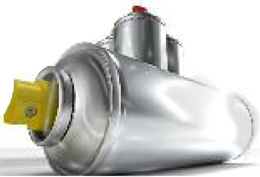A quick guide to hydrocarbons, their use and effects.
Hydrocarbons are also known as solvents.
Appearance and uses
Solvents come in cans of aerosol propellants, gasoline, glue or paint thinners. They are taken by inhaling the vapours.

Common effects
Dizziness, feelings of unreality as if the user was drunk, hallucinations, lasting for up to 45 minutes, are quite common.
Unwanted effects: hallucinations, stomach cramps, vomiting, rashes around the nose and mouth and inflamed eyes, light-headedness, dizziness and drowsiness, loss of control or unconsciousness, kidney damage, liver damage, heart failure and suffocation can occur.
All inhalants carry similar risks and can be deadly.
Other inhalants include amyl and butyl nitrite, nitrous oxide, chlorohydrocarbons and hydrocarbon.
Addictive?
There is no evidence that these chemicals create physical addiction, though their effects can create a desire to continue using, and continued use can lead to a level of tolerance that requires the user to use higher quantities.






